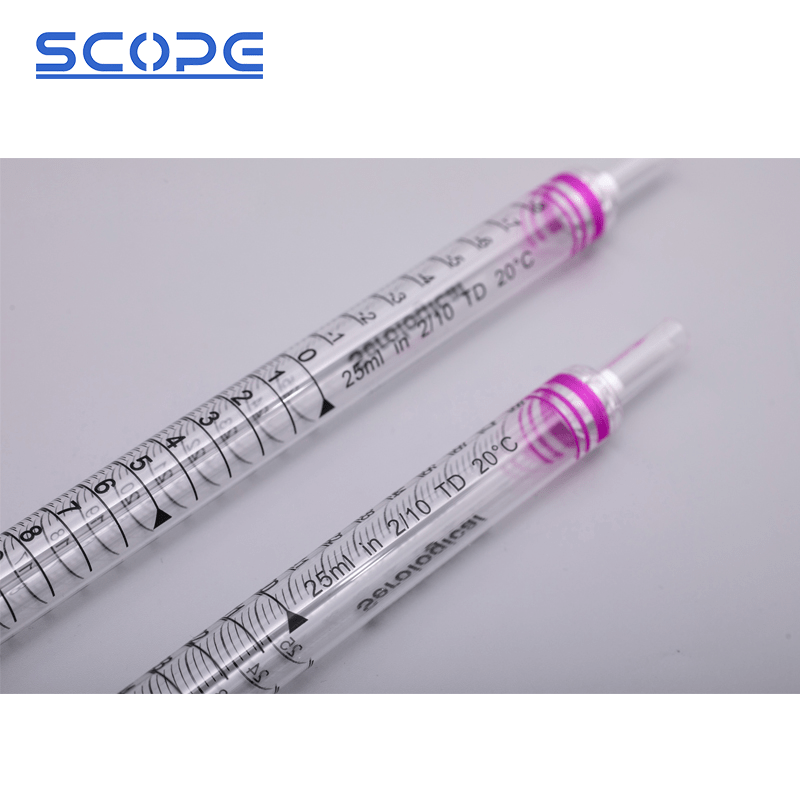Serological pipettes offer several advantages that make them popular tools in laboratories:
l Accuracy and Precision: These pipettes are designed and calibrated to deliver specific volumes with high accuracy, typically within 1-2% of the specified volume. When the proper technique is used, the basic mechanism for drawing and dispensing liquids is simple, reducing user error.
l Volume Range: Serological pipettes are better suited for transferring larger liquid volumes (1-50 mL) than micropipettes, which can only handle microliters. They come in a variety of sizes to meet different volume requirements within the milliliter range.
l Cost-Effectiveness: Serological pipettes are a cost-effective alternative to complex pipetting devices for routine laboratory tasks. Disposable sterile tips reduce contamination risks and eliminate the need for thorough cleaning procedures.
l Easy to Use: Even those unfamiliar with laboratory techniques will find them easy to use due to their basic design and operation.
l Durable: Many serological pipettes, particularly those made of glass, are designed to last with proper maintenance and handling.
l Transparent Design: The clear glass or plastic allows for easy visualization of the liquid being drawn and dispensed, resulting in more accurate measurements.
l Reduced Waste: Adjustable serological pipettes use fewer tips than single-volume micropipettes for different volume transfers.
However, it should be noted that serological pipettes may not be the best option in every situation. Micropipettes provide greater accuracy and control when working with high throughput or dispensing very precise volumes. The correct use of serological pipettes is also critical.

